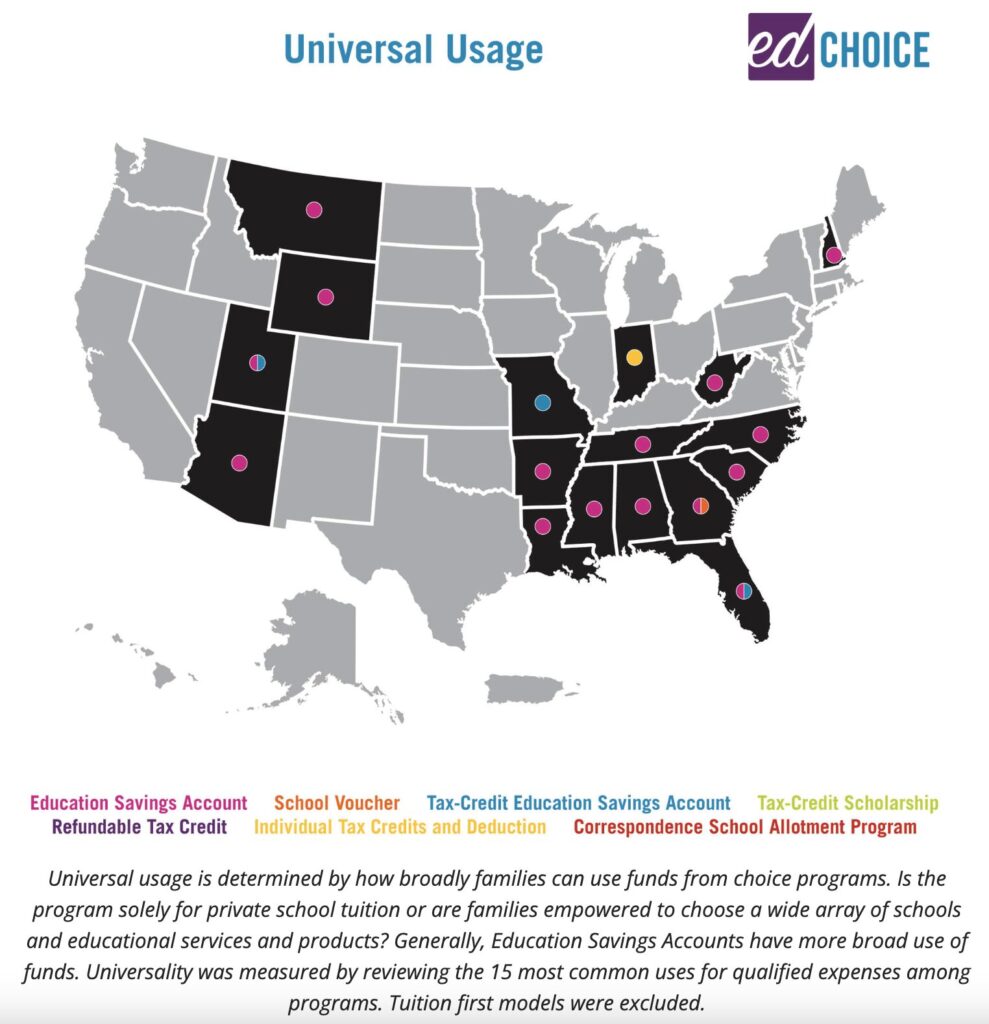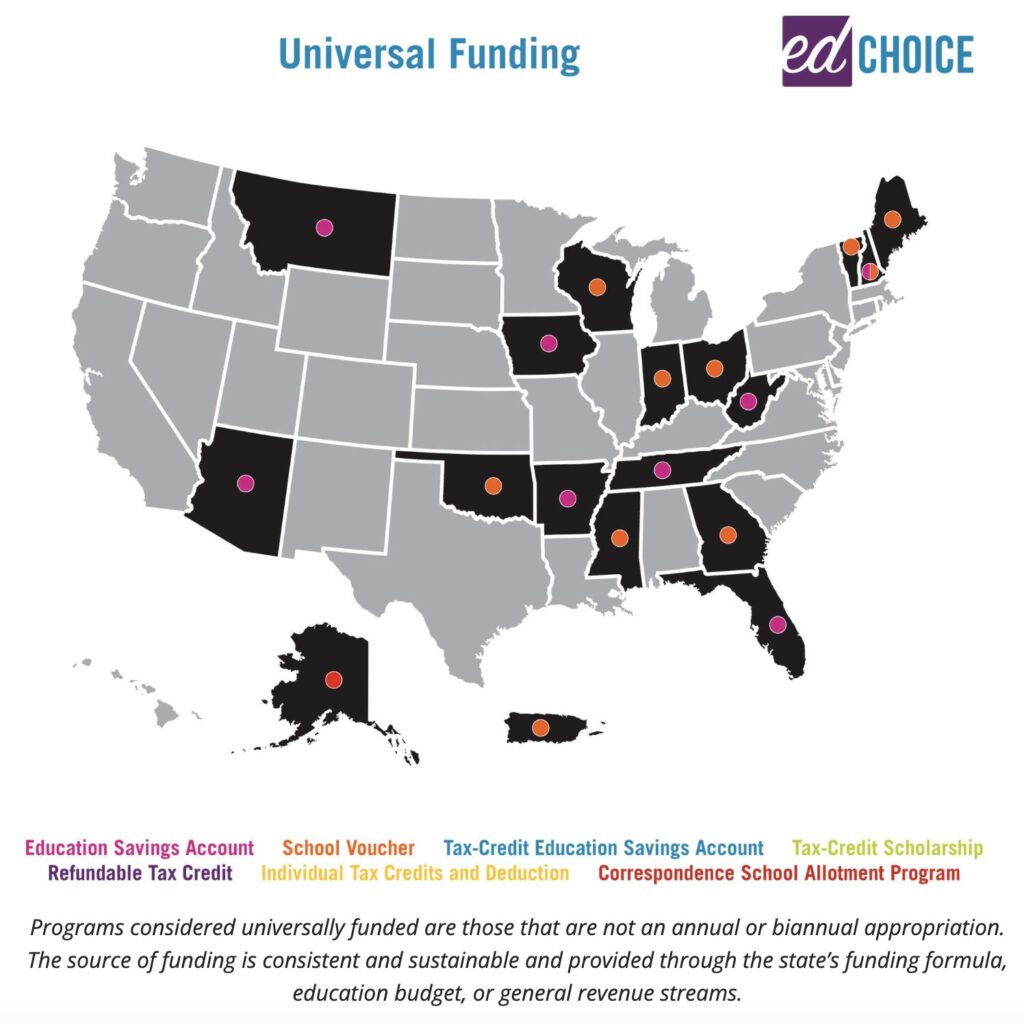There’s more to universal school choice than eligibility, expert says
The school choice movement joyfully declared 2023 the “year of universal choice,” but more can be done to make choice truly universal.
That’s according to EdChoice, a leading educational…

The school choice movement joyfully declared 2023 the “year of universal choice,” but more can be done to make choice truly universal.
That’s according to EdChoice, a leading educational freedom advocate.
“Just over three years ago, zero states offered universal educational choice. Today, 13 states offer programs like school vouchers or education savings accounts (ESAs) that are open to all students,” writes Ed Tarnowski, a state policy associate at EdChoice in an article published in Education Next.
Just because a program is “universal” doesn’t mean there are no restrictions, something EdChoice is urging states to address. For example, a program with universal eligibility may lack sufficient funding or flexibility to make it accessible to all, Tarnowski says.
“Just getting to universal eligibility is not when the mission is finished,” he told The Lion. “To truly see systemic change in education, we want to empower families as much as possible and make sure that all parents can access (school choice), use it and customize their (child’s) education based on their needs. That’s something that we’re going to be talking a lot about over the next few years.”
Tarnowski says there are three factors by which to assess true universality: eligibility, usage and funding. A program can be strong in one or two aspects, but only a few have all three.
Eligibility and Usage
Although many choice programs were once limited to low-income students or those in struggling urban districts, 13 states have lifted such restrictions, allowing all K-12 students to qualify. Among them are Oklahoma, Florida and Iowa.

While this is progress, some programs restrict how the money parents receive can be spent. In particular, “tuition-first” policies limit spending on expenses such as tutoring, supplies or varied learning experiences and programs, Tarnowski says. Educational Savings Accounts, or ESA’s, on the other hand, tend to provide the most flexibility as parents choose how to spend the money.
“It’s more of a parent-controlled account parents can use on a varying range of educational expenses pending what the state allows,” he says of ESA’s. They are also gaining in popularity.
“In 2024, of all the legislation we tracked related to private school choice (including) ESA’s, vouchers, tax credit scholarships and refundable tax credits, about 73% of that legislation related to ESA’s. ESA’s are kind of dominating the conversation, and they regularly poll as the most popular of the different type of choice options.”

Using this measure, which excludes states with tuition-first models, Indiana, Missouri and 15 other states qualify as universal usage.
Universal Funding
Perhaps the greatest bottleneck in school choice is universal funding.
All students may qualify for the program but not everyone can use it if there aren’t enough funds. Utah approved $40 million for its choice program then doubled it to $80 million because of demand, but there are still 17,000 students on a waiting list.
“For a program to achieve universal funding, it must not come from an annual or biannual appropriation,” Tarnowski writes. “Instead, the source of funding must be consistent and sustainable and provided through the state’s (education) funding formula, education budget, or general revenue stream.”
Seventeen states achieve universal funding, including West Virginia, Alabama and Montana.

However, only four states meet all three universals: Arizona, Arkansas, Florida and West Virginia.
EdChoice hopes to see that number expand.
Universal choice is when “every student in the state is eligible for the program, each student is guaranteed a funded seat for the program and each student is guaranteed a wide range of qualifying expenses,” Tarnowski says. “With all these states enacting universal eligibility, some of them are falling short.”
Tennessee’s Beacon Center agrees.
As the nonprofit seeks to expand that state’s limited choice program, it ranked ESA’s in Arizona, Florida and Utah as best for eligibility; Utah as most flexible for allowing part-time public school and non-traditional school enrollment; and Florida, Arizona and Utah as best for protecting homeschoolers while allowing them to access education dollars.
“Tennessee cannot allow itself to continue to be surpassed by other states in the arena of educational freedom,” the center writes. “Providing a universal ESA to every student will give the power of the purse to families and provide the best education options for every child in Tennessee.”



